No Mystery In These Photos
Posted by: Loren Coleman on November 15th, 2007
Over the last two days, I’ve been getting inquiries about the identification of two objects in some recent photographs.
One supposedly “cryptid” that has been shown to me is this animal (below) being featured in the Russian media. Said to be a “Prehistoric Fish,” it reportedly was “found in Russia, during construction near an underground river in Chelyabinsk city. The workers killed it and these are the remains.”
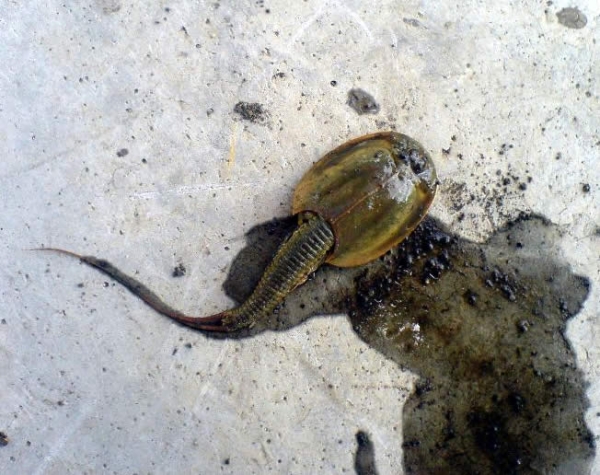
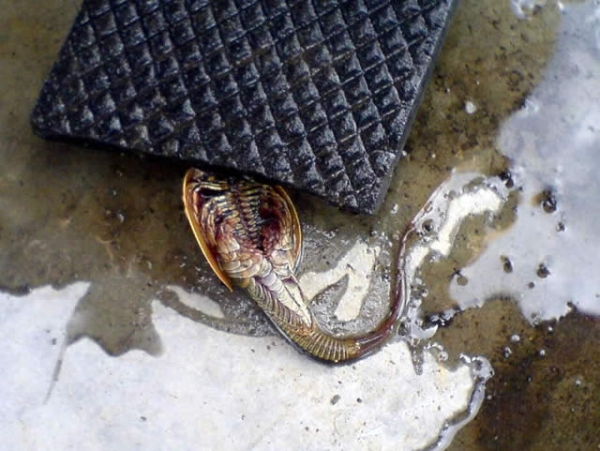
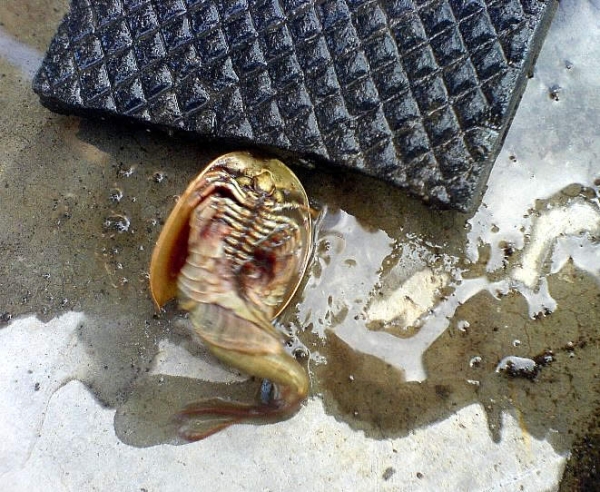
Apparently, someone is having a little fun with pictures and sizing. This animal is actually a small species, the Triops (notostracans), the so-called tadpole shrimp or shield shrimp. While an aggressive predator, they are smaller than what Pravda (hardly the “truth”) would have us think.
The Triops grows to an upper limit of 22 millimeters or 0.8661417314 inches in length. The Pravda photographs give an illusion this animal is much bigger.
Triops or notostracans are intriguing, no doubt about it, though. I like what it says here in their description: Triops cancriformis may therefore be the “oldest living animal species on earth.” Here’s a less dramatic photograph:
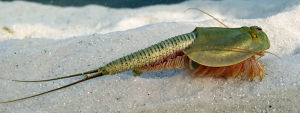
++++
Other emails have contained questions about what that skull is in the foreground of this photograph of me by Amber Waterman:
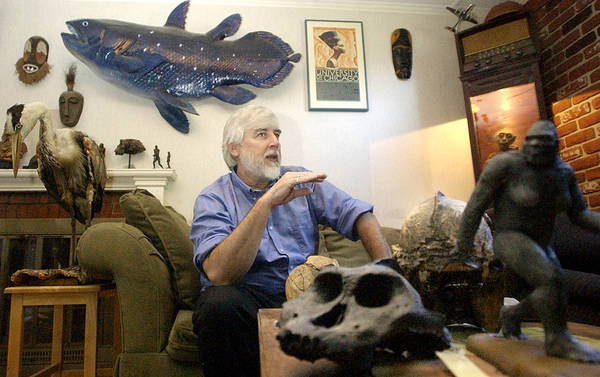
The skull is the John Weisgerber replica made for Valley Anatomical Preparations of the Australopithecus aethiopicus . The original was discovered by A. Walker in 1985 on the west shore of Lake Turkana in northern Kenya. The skull is commonly referred to as “The Black Skull,” due to its blue-black color caused by the manganese-straining of the cranium. It has been dated to 2.5 million years ago.
Various replicas, such as the Bone Clones one of Australopithecus aethiopicus Skull KNM-WT 17000 (below), are also available.

“The Black Skull” is an attractive hominid fossil, and I enjoy the easy-to-identify (for students and the media) example of its sagittal crest.
Hope that clears those two things up.
About Loren Coleman
Loren Coleman is one of the world’s leading cryptozoologists, some say “the” leading living cryptozoologist. Certainly, he is acknowledged as the current living American researcher and writer who has most popularized cryptozoology in the late 20th and early 21st centuries.
Starting his fieldwork and investigations in 1960, after traveling and trekking extensively in pursuit of cryptozoological mysteries, Coleman began writing to share his experiences in 1969. An honorary member of Ivan T. Sanderson’s Society for the Investigation of the Unexplained in the 1970s, Coleman has been bestowed with similar honorary memberships of the North Idaho College Cryptozoology Club in 1983, and in subsequent years, that of the British Columbia Scientific Cryptozoology Club, CryptoSafari International, and other international organizations. He was also a Life Member and Benefactor of the International Society of Cryptozoology (now-defunct).
Loren Coleman’s daily blog, as a member of the Cryptomundo Team, served as an ongoing avenue of communication for the ever-growing body of cryptozoo news from 2005 through 2013. He returned as an infrequent contributor beginning Halloween week of 2015.
Coleman is the founder in 2003, and current director of the International Cryptozoology Museum in Portland, Maine.










Thanks for the article, Loren. Fascinating creatures. How closely related are they to Horseshoe Crabs?
Ceroill- I can answer that. The Triops and horseshoe crab are similar in appearance, but that is about it. Simply put, Triops is a crustacean, the horseshoe crab is not. The horseshoe crab is not really a true crab at all, but is rather another type of arthropod, more a distant relative of spiders, scorpions, and trilobites. Hope this is helpful!
MM, thanks. I knew the Horseshoe Crab isn’t a true crab, but thanks for the other info. I’ve always found them fascinating critters, and this is my first introduction to Triops. Maybe someday we’ll find trilobites or crinoids in some incredibly deep or oddly mineralized part of the sea floor.
Ceroill- The Triops are actually very interesting creatures for a couple of reasons. Not only have they remained virtually unchanged for around 350 million years, but they have a fairly unique lifestyle. They inhabit small, temporary pools of water that form after flashfloods or heavy rainy seasons. Since these habitats are not permanent, the Triops have a a short life cycle and their eggs go into dormant stasis when the pool dries up. When the rains come again, viola! A new generation is born.
The only reason I really looked into this particular creature is that in Japan, they sell them in kits as pets. You can pour the eggs into water and hatch them kind of like sea moneys. Someone gave it to me as a gift, knowing what a science nut I am, and I couldn’t resist looking for more information on them.
A few months ago I found a video on youtube about this creature. I was so amazed, to say the least 😉
MM- neat!
Mystery-man: They do here in America too. I remember having some fun with Triops care after one of my green anoles died of old age. They are neat little creatures indeed.
Some triops species grow indeed even a bit bigger, about 10cm, like a small fish, and I suppose the specimen on the photos belonged to one of the larger species.
Triops is reminiscent of some of the really bizarre (and I can’t emphasize that word enough) fossil creatures found in the Burgess Shale deposit in Canada. Most of these critters were very tiny, but absolutely nightmarish in appearance. How many of them may have lived or functioned is pretty mysterious, since some of the body parts correspond with nothing we’re familiar with in any life forms today. In a way, even though we can see the physical proof of these things, they still remain “cryptids”. There is one book out about them called Wonderful Life: Burgess Shale and the Nature of History by Stephen Jay Gould. A Google search for Burgess Shale will also turn up some good articles and pictures.
I recognized it immediately as a Triops. I tried to raise them once as a kid, but had better luck with sea monkeys(and I also had green anoles and countless other small critters).
The workers killed it and these are the remains.”
Figures.
For a moment I thought—-
Trilobite!!!
For ONE moment.
Never seen one of the triops, though. Cool!!!